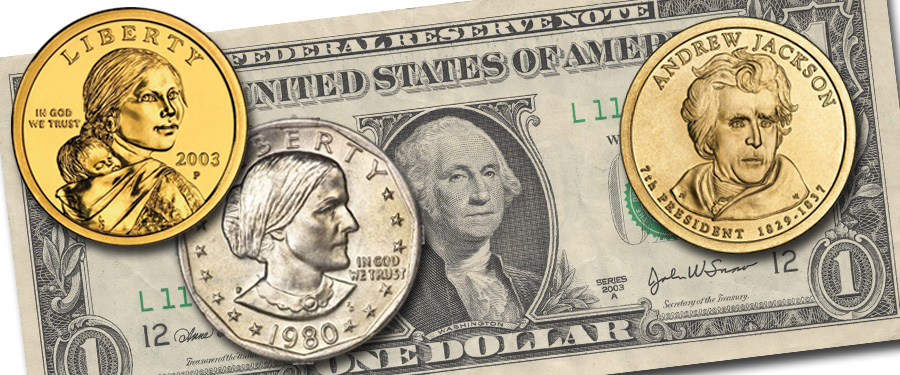
A recent issue of Time magazine had an article titled “Scrap metal: Americans hate the $1 coin. Too bad we have so many,” by Emily Maltby. The author quoted Dr. Ute Wartenberg, executive director of the American Numismatic Society, who suggested that the dislike of current dollar coins is because they are “cheap and unrecognizable, like Monopoly money.” The weight of a dollar, eight times more than a paper bill, is another aspect. However, some reason was added when Dr. Wartenberg was further quoted, “If we get rid of the bank note, then maybe people will start to love them.”
The larger picture is that a number of other countries, including Canada to the north, Great Britain, and others, have replaced bank notes with coins. Metal pieces are more durable and, according to the Time magazine article, drawing from the U.S. Federal Reserve and other sources, a paper dollar lasts on average 5.9 years in circulation but a coin lasts 30+ years. The + is enigmatic — perhaps a coin will last 50 years, perhaps a coin will last far longer. The main reason, not stated in the article, is politics. Suppliers of bank note paper to the Treasury Department have strong connections, which have withstood many attacks by those seeking economy and efficiency.
When the mini-dollars were introduced in 1979 — with the Susan B. Anthony design — there was hope on the part of the Treasury Department that the dollar bill would be soon replaced. A problem, perhaps the main one, which still exists today, is that hundreds of millions of dollars would be needed to convert vending machines to use dollar coins. Without any assurance that dollar coins would become plentiful in circulation, vending machine manufacturers and operators have declined. Accordingly, with relatively few exceptions anyone having a few Susan B. Anthony dollars or current Presidential or Sacagawea dollars is out of luck.
Today in 2014, utilitarian coinage is limited to the Lincoln cent (still necessary to make change), the nickel and the dime and, especially, the quarter, the last being the highest denomination coin of the realm that is actually widely used. It has been many years since I have received a half dollar in change, and I have never received a metal dollar.
It is interesting to contemplate that only four coins are needed for commerce, but to get one of each coin actually minted each year by the Treasury Department, including 2014, requires many thousands of dollars — if you include Proof coins, commemoratives, gold and silver bullion coins, and platinum coins. Just to keep current costs over $10,000. Today, one can “specialize” in just a single year, and coins of a given year could fill an exhibit case!





